Overview
Problem
The Forest Service oversees 160K+ miles of public trails, but relied on outdated, manual processes for collecting and reporting trail data. Crews used paper forms and disconnected systems, which led to inefficiencies, inconsistent reporting, and difficulty to demonstrate the full scope of work required to accurately maintain our nation's trails.
Goal
Design a modern geospatial application suite (mobile and web) that empowers field crews to log trail conditions and resources efficiently — even offline — while enabling managers to access accurate, standardized data across regions. The solution needed to reduce inefficiencies, improve data quality, and scale across 10+ legacy applications for nationwide trail management.
Research
Mapping the Ecosystem
The trails ecosystem supports a layered network of internal and external users. Mapping the trails ecosystem was essential to understand how information flowed between field staff, national leadership, and external partners.
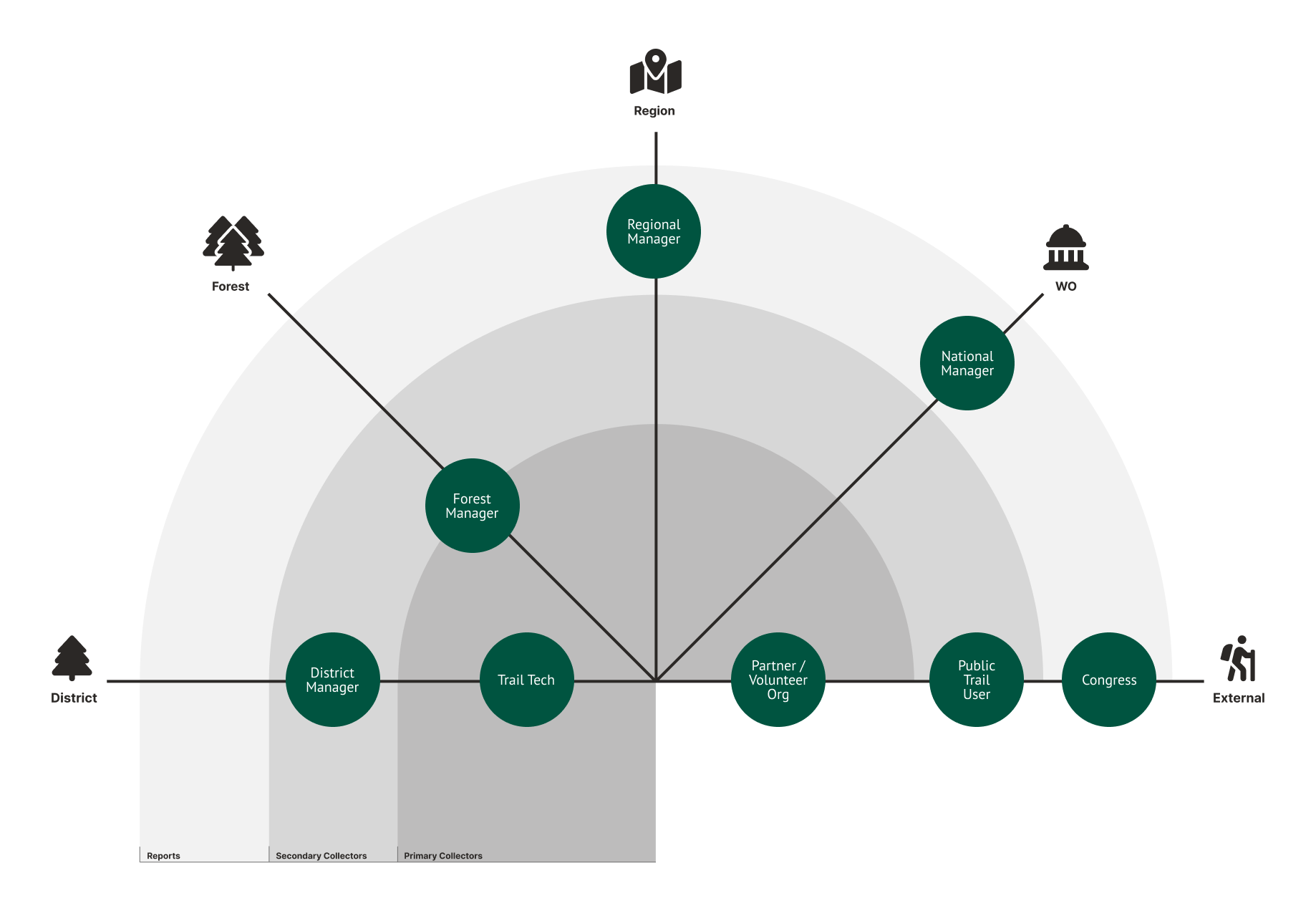
User Interviews
Through remote interviews with 24 users, I gained a detailed picture of workflows, constraints, and priorities from crew members to leadership. Other key insights were:
Personas
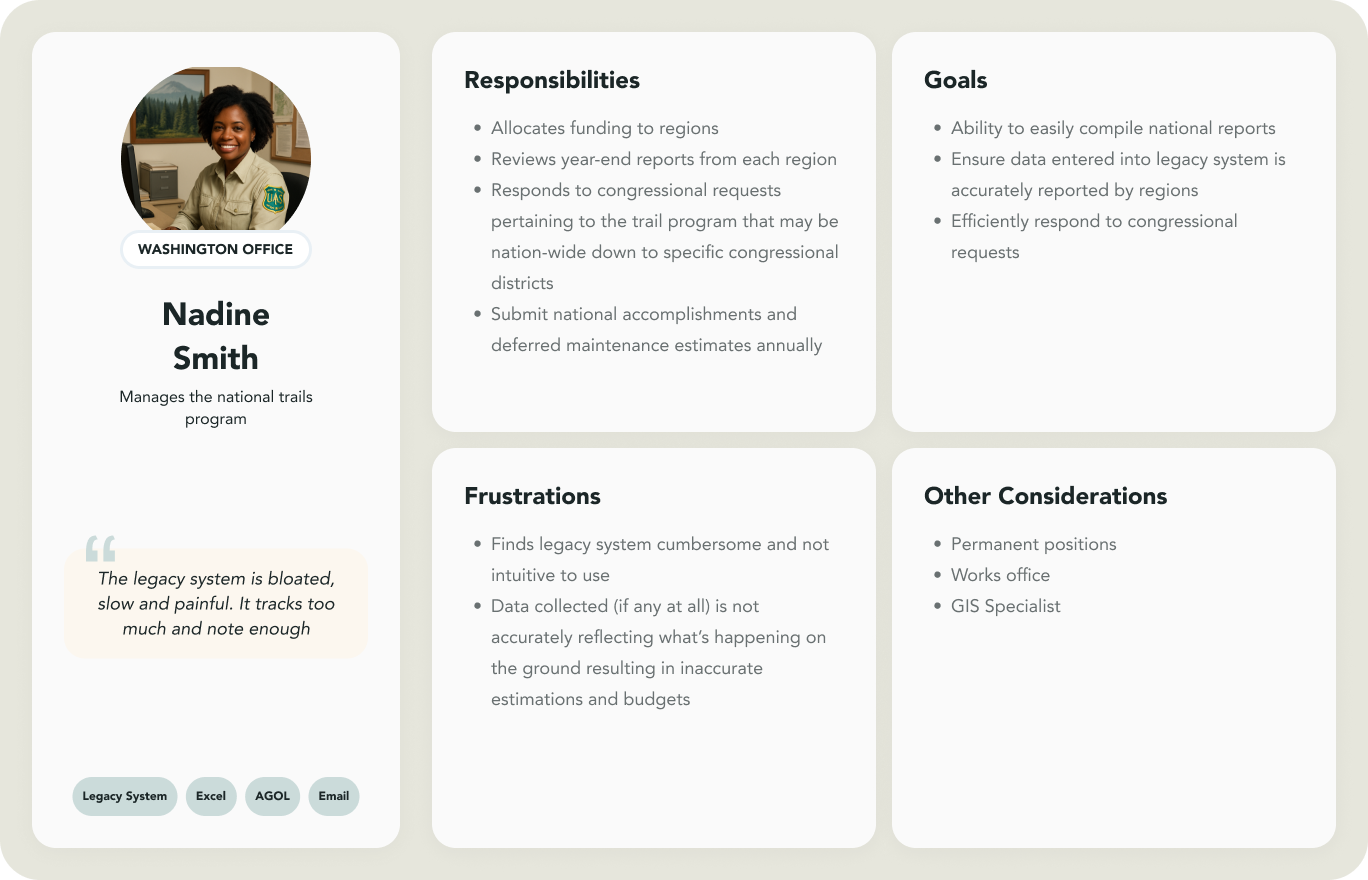

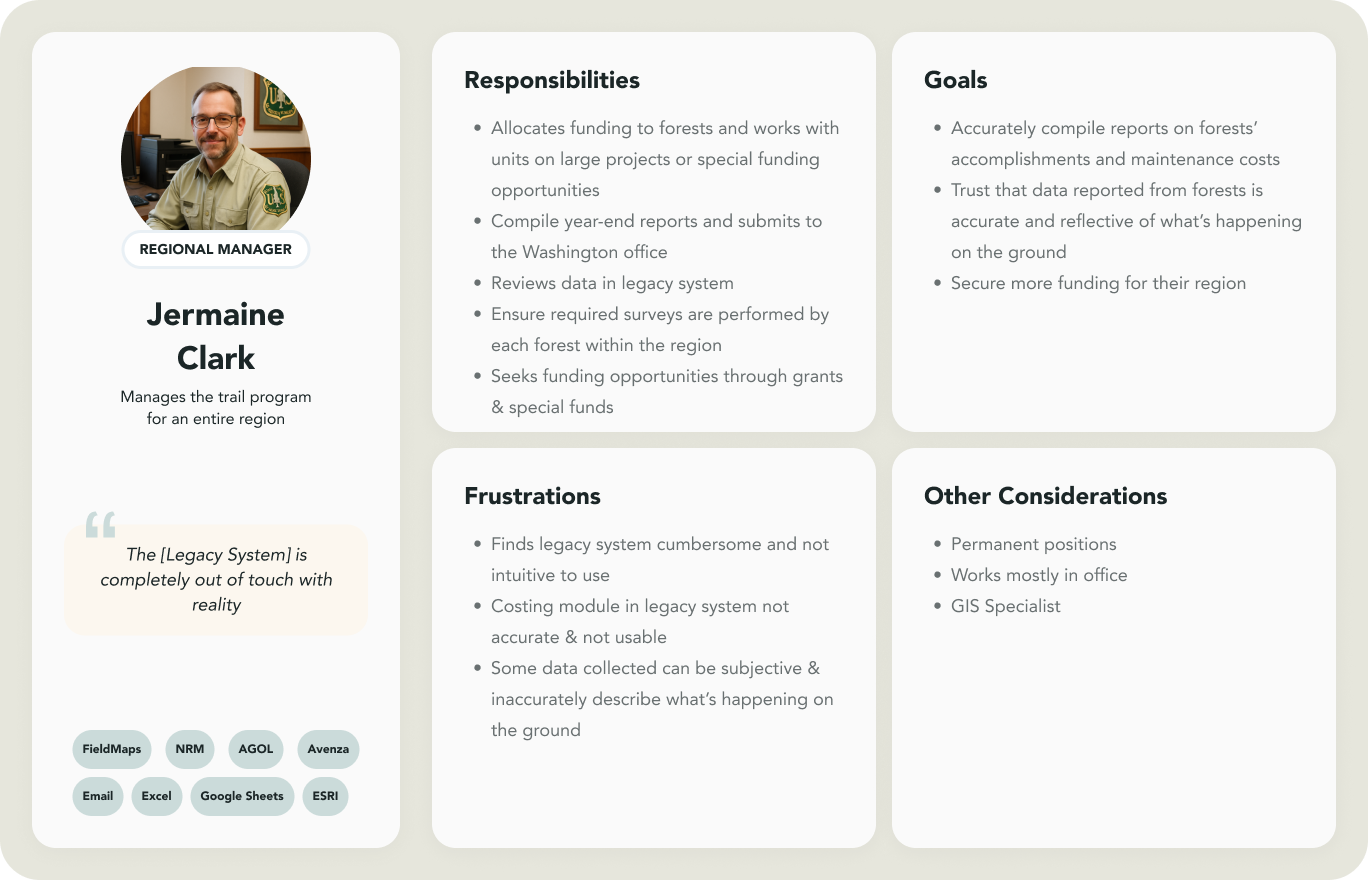
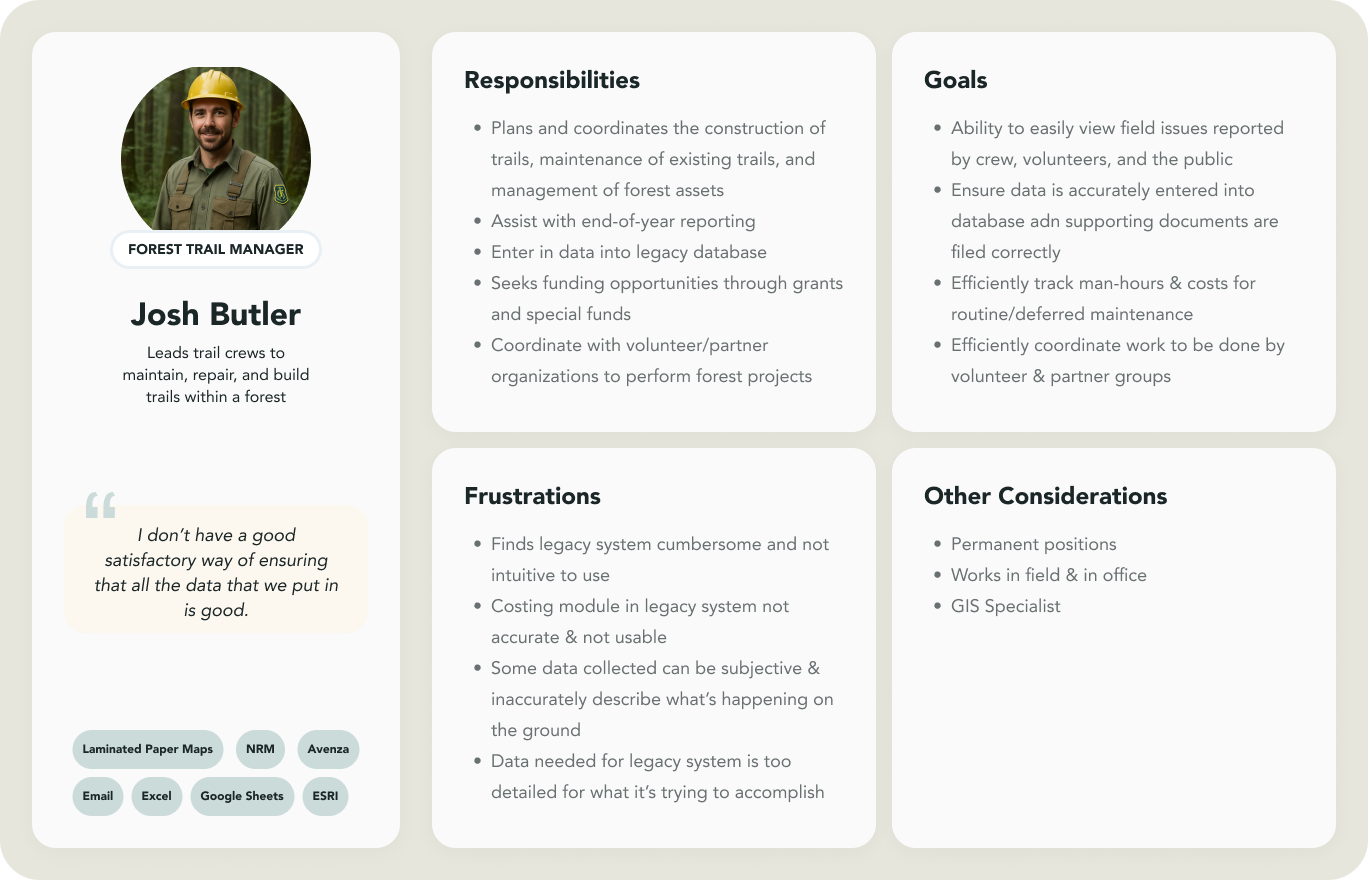
Feature Prioritization & Roadmap Planning

DESIGN
How might we transform trail management into a seamless, data-driven process that empowers crews and informs leadership?
To address this question, we built two streamlined Survey123 prototypes to find the best fit for users' mental models: one organized by trail feature type, the other by action needed.
We also made key design decisions to support use in challenging field conditions:
- The ability to mark the user's location with a pin during logging
- Pre-populating trail data to reduce cognitive load & redundant entry
- Minimal text input to allow for quick logging in poor weather
- Offline capability for use in remote backcountry areas


ITERATE
I conducted A/B testing with six users to determine which organizational method best aligned with their mental models.
User feedback showed a preference for the action-oriented prototype, aligning with actual work processes. We identified several additional user needs that were crucial for improving the tool's effectiveness:
- Enhanced high-contrast interface for better visibility in bright sunlight
- Image and file upload options to provide context
- Broader, more intuitive feature categories that mirrored how they thought about trail elements
Final Designs
In addition to the agency's survey, we built additional tools to support the entire trails network.
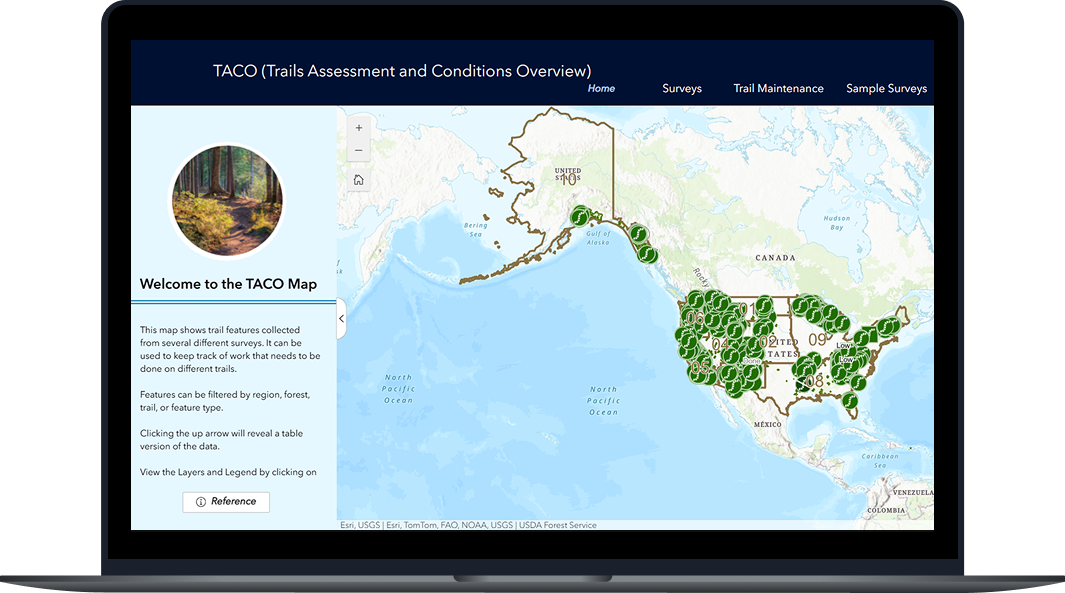
Web Map
Serves as a central platform for visualizing, reviewing, and managing field-collected data.

QA/QC dashboard
Managers can now review data quality before it synced with the database, improving data integrity.
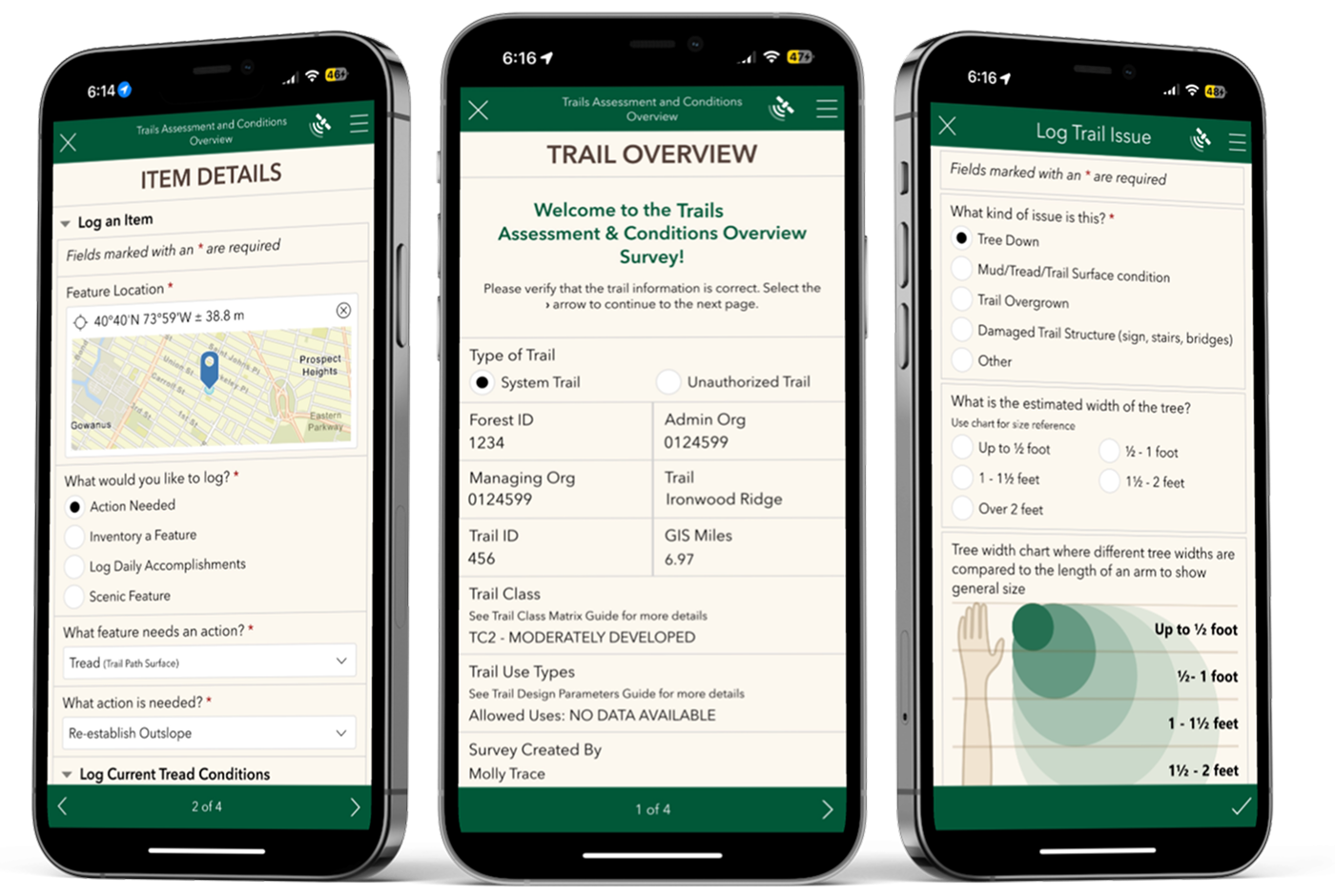
Agency, Partner, and Public Surveys
Unified surveys to maintain consistent data collection across all users, including external teams.
Map Style Guide & Symbology
Out in the field, agency staff, volunteers, and members of the public logged 1000+ of trail features through our mobile surveys. To keep this volume of data clear and usable in AGOL web maps, we designed a symbology system where shapes indicate survey type, icons represent the feature, and color signals urgency. By layering meaning this way, dense datasets became easy to scan, filter, and interpret—helping users quickly focus on what mattered most.

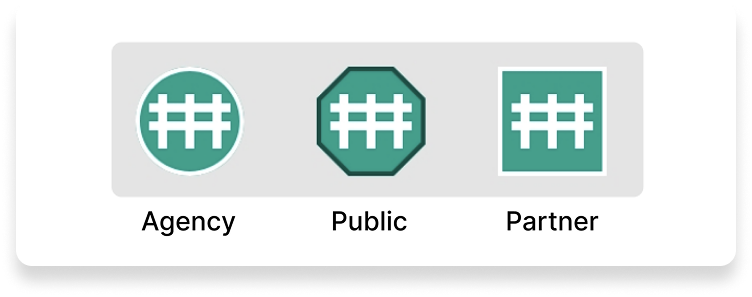
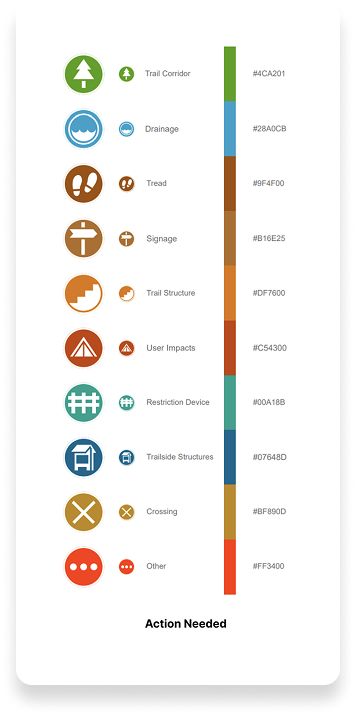
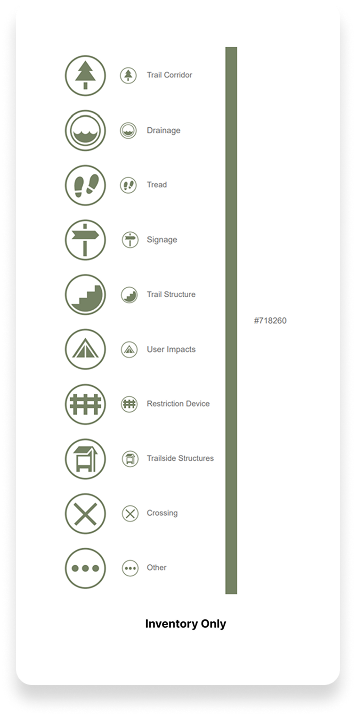
Flow: Logging an Action Item


OUTCOMES
The MVP was deployed agency-wide in March 2024.
We established continuous feedback loops to ensure our solution evolved with user needs across the trails ecosystem.
LESSONS LEARNED
Align tools with real workflows
Understanding the disconnect between leadership and field crews helped us shift the focus from compliance-driven design to user-centered solutions.
Simplify to Scale
Reducing complexity in the form and automating backend logic helped standardize data while easing the burden on field users.
Build for the Full Ecosystem
Designing tools for managers, field crews, and partners ensured stronger collaboration and more complete data capture.




